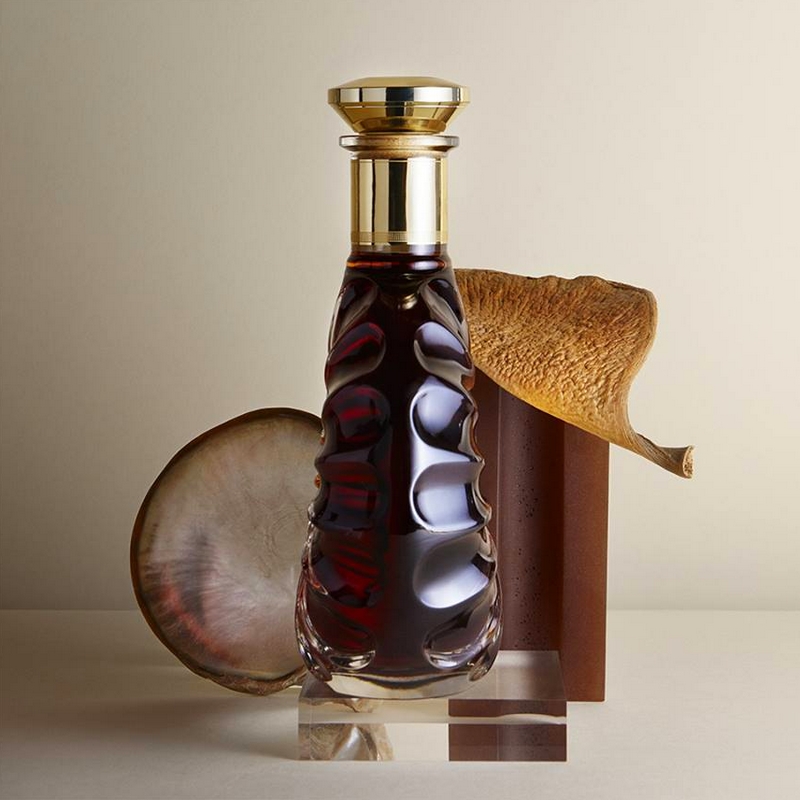
Rémy Martin XO is an objet d’art; photo source: facebook.com/RemyMartin/
All cognac is brandy – but all brandy is most certainly not cognac.
Any grape-based spirit can be a brandy, but the process for making cognac is unlike any other: using top-quality ugni blanc, colombard and folle blanche grapes from a carefully defined region in south-west France, distilling them twice and ageing the resulting spirit in barrels that soften, complicate and enrich the flavours.
As essential as the grapes is the cellar master, who is responsible for ensuring that the label remains consistent – that the bottle you buy today tastes the same as one you bought five years ago. Each producer’s cellar master advises growers on cultivation and distillation, selects their finest distilled spirit – known as eau-de-vie, which means “water of life” – for blending into various cognacs.
The finest areas of the cognac region are Grande Champagne and Petite Champagne – known collectively as Fine Champagne – which is where Baptiste Loiseau, cellar master for Rémy Martin, spends his days.

“All the Rémy Martin cognacs are part of these two areas,” he says. Champagne, here, is nothing to do with the fizzy wine from farther north. “When we use the word champagne in regards to cognac, we are talking about the soil and the terroir,” Loiseau explains. “These are rolling chalky hills and chalk is very important – it reflects the light and retains moisture in dry weather” – which is crucial for the quality of the grapes.
The grapes are picked in autumn – “when the acidity and sugar levels are just right” – then gently pressed and the resulting juice left to ferment for five to seven days. The result is a dry, acidic white wine with between 7% and 9% alcohol. Then comes double distillation, the process that makes cognac so distinctive. The wine is heated in small copper stills, along with the lees – the yeast residue – which adds depth and complexity to the eau-de-vie.
“The small still means you get a more harmonious eau-de-vie,” says Loiseau. “And we retain the fine lees of the wine because they heighten aromatic complexity. This rigorous, traditional approach may be slower than modern methods, but it allows us to craft intense, rich spirits.” Quality control is rigorous – any spirit not entirely up to standard is discarded. “If we start with 12kg of grapes, we will make about 1 litre of eau-de-vie,” says Loiseau.
Then, Loiseau and his tasting committee must decide which eau-de-vie merit inclusion in the year’s cognacs. Over winter, they try at least 2,000 samples from 800 growers. To be called cognac, the chosen liquid must be aged for at least two years in oak, although Rémy Martin’s are aged for longer – all in their 29 hectares of cellars, containing more than 140,000 barrels made from oak trees over a century old. This wood deepens the liquid’s aromas and imparts a distinctive vanilla flavour over the years.
Even at this stage, the brandy requires supervision. Each cellar has slightly different humidity levels and this, along with the age of the oak cask, affects the ageing process. Loiseau must continually taste to ensure that all is going as it should, and the brandy must be progressively transferred to different casks. Those aged for at least four years are marked VSOP (very special old pale), while XO (extra old) cognacs have aged for at least 10 years – often many more.
Two strange things occur as the brandy ages. One is that some of it evaporates – the equivalent of 8,000 bottles every day, which is known as “the angels’ share”. The other is that a fungus that likes the humid cellars settles on the walls and roofs, turning them black. You can always tell a cognac cellar by this peculiarity.
“This traditional process creates a perfectly balanced cognac – pure, elegant, rich, long-lasting,” says Loiseau. He drinks his neat. “That’s the way to really appreciate all the subtle, spicy notes of cinnamon and clove mixed with mirabelle, honey and gingerbread.” He suggests Rémy Martin 1738, served chilled – not with ice, but with frozen grapes, which won’t dilute the drink and will “serve as a reminder of the origin of cognac”.
Try Loiseau’s serving suggestion at Bibendum where Rémy Martin has partnered with Michelin-starred chef Claude Bosi to create a dedicated cognac bar, serving seasonal Rémy Martin cocktails with tailor-made food pairings. Find out more here, and visit Claude Bosi at Bibendum Michelin House, 81 Fulham Road, London SW3 6RD
guardian.co.uk © Guardian News & Media Limited 2010
Published via the Guardian News Feed plugin for WordPress.

